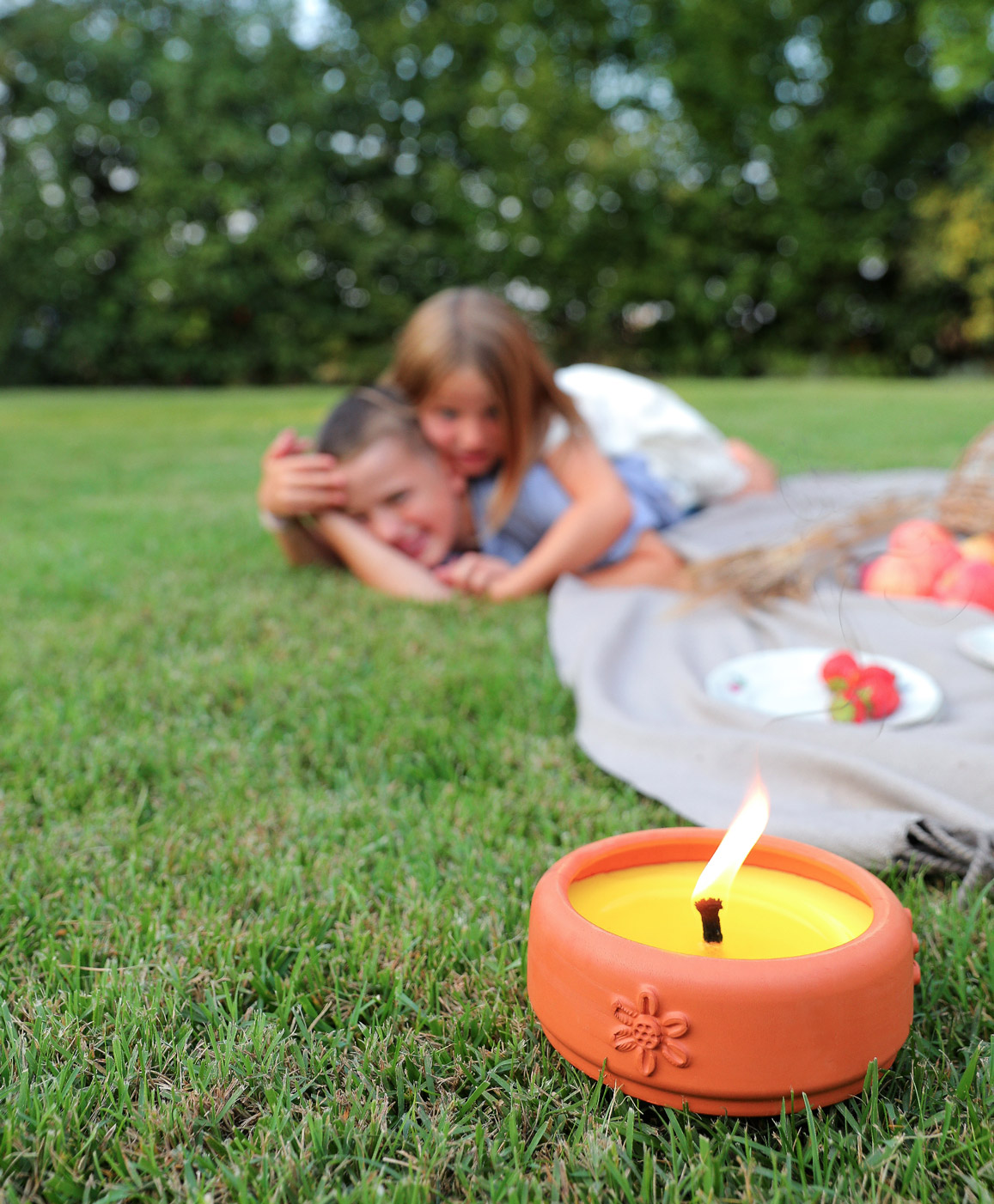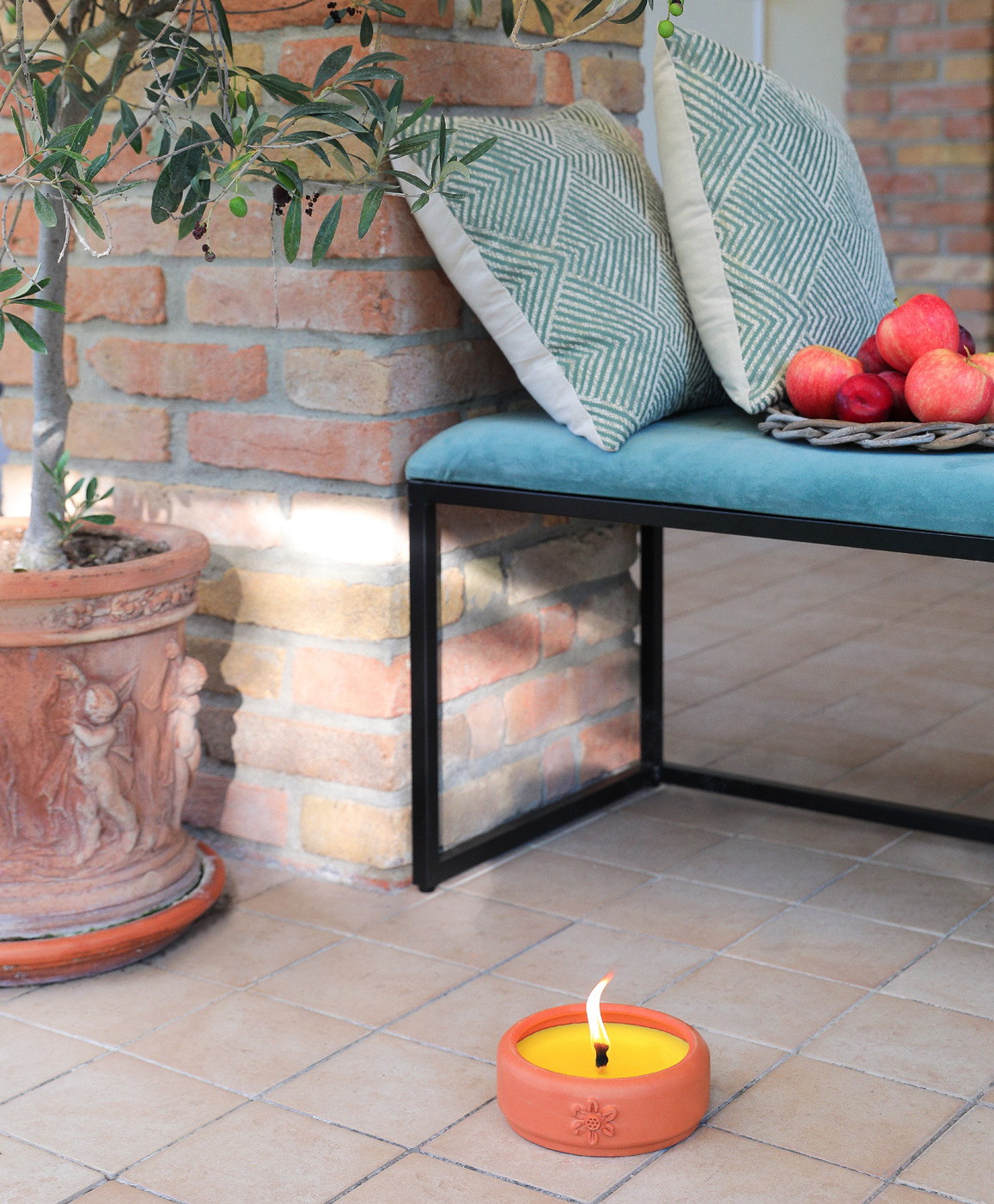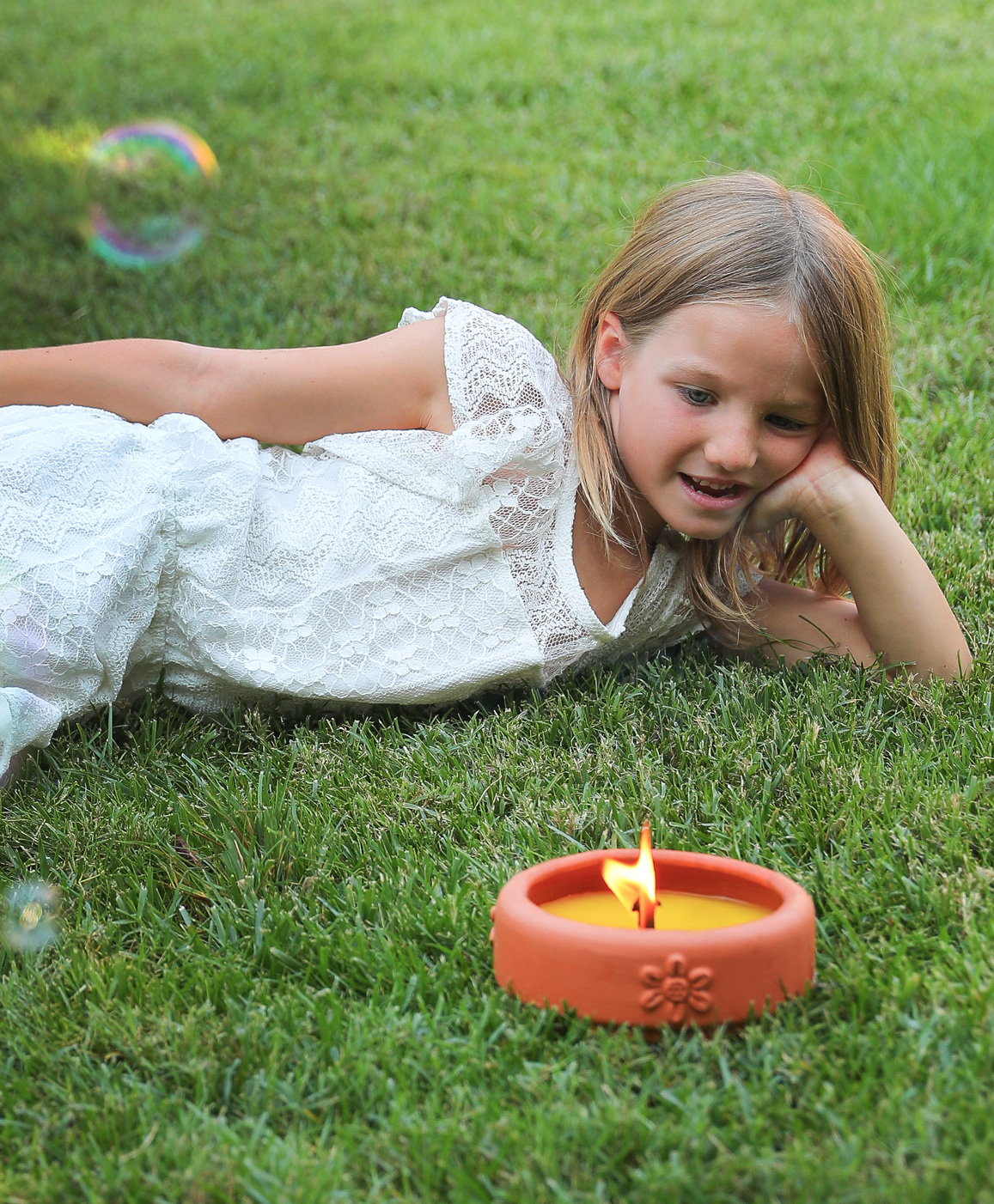


The fact that citronella has been commonly used for over a century to protect us from insects and irritating mosquito bites is not in doubt.
But its effectiveness, and particularly that of its essential oil, which is also used in candles, still seems to be a subject for discussion in scientific circles. Despite the fact that people continue to use citronella, presumably with satisfaction, currently there is no agreed and definitive response on the subject from the scientific community.
In this article the curious reader can learn about the effects of citronella and how it works, and understand what factors cause and determine the various effects of other candles or products that are of the same type but are only superficially similar.

Citronella is a plant of Asiatic origin, mainly found in Sri Lanka and the Indonesian archipelago, and has always been used as an insect repellent. Its essential oil is characterized by a rich lemon scent, leading to its first use in perfumery, in 1858 in France (where lemons are called “citron”, hence the name).
It did not take long before the plant extract began being used as a natural repellent: by the beginning of the 20th century there is evidence that it was used against mosquitos by the Indian army, which had to face difficult climatic and environmental conditions where insects could ruin the health and stamina of the soldiers on active service.
In 1948, citronella was registered for the first time in the USA as an insect repellent; today the US Environmental Protection Agency officially catalogs citronella oil as a “biochemical pesticide which has a non-toxic mode of action” and since the 1990s citronella has been exempt from regulations as it is classed as non-toxic to humans.

When we speak of citronella as a plant, we have to remember that there are two types, named after their geographical origins: Sri Lankan citronella (Cymbopogon nardus) and Javan citronella (Cymbopogon winterianus). The essential oils extracted from the two plants, which are used to produce citronella candles, differ mainly in the quantities of active natural ingredients that repel insects, which include citronellal, geraniol, citronellol, camphor, eucalyptus, eugenol, linalool and citral. The result is that certain types of citronella work better than others. To be specific, Javan citronella has more citronellal than Sri Lankan (up to 39%, compared to 6%), more geraniol (25% compared to 23%) and more citronellol (13% compared to 9%). Note: it is often better to opt for the types of protection containing the Javan variety.
For insect repellent, citronella oil is used in various products that can be split into two groups. On one hand, there are the products that are applied directly to the skin and come in contact with the body via the application of sprays, lotions, creams, patches and bracelets containing citronella. On the other hand are those that require fire (or to be lit) and affect the surrounding air, like candles, incense and liquids for garden torches.
The repellent effect of citronella operates at the molecular level. Briefly, we can describe how it works by saying that the molecules released by citronella oil “mask” the smell of certain compounds produced by humans, such as carbon dioxide and lactic acid, which attract insects. In a way, it is as though citronella produces a sort of invisible and temporary protective shield.
Regarding citronella candles, it is useful to mention two lesser-known aspects that clarify how they work and help us understand their quality. Firstly, the active ingredients in the essential oil of citronella are not released by the flame (which would in fact burn them, making them useless) but by the wax liquefying due to the flame’s heat. Secondly, it is important to control the way the wax melts around the wick. If the area that melts is wide and homogeneous, the candle is of good quality. If, however, the wax melts only near the wick, this could mean that the wax is of poor quality or that the size of the wick is not right for the candle. In either case, the result will be a less effective product.
Over the years there have been several studies to test the effectiveness of citronella, as well as that of other chemical-based repellents, but researchers have not reached a consensus.
Some studies, like that at the University of Guelph, Ontario, found that using citronella candles nearly halves the number of mosquito bites compared to having no protection, and is more effective than citronella incense which only produces a 24% reduction. Other tests, in particular one study in 2017 published by Oxford University Press, report much lower or near-zero efficacy.
Many factors could explain the differences in the results: the different types of citronella candles used, the higher or lower quality of the ingredients, the characteristics of the mosquitos used in the tests and of the people used as “guinea pigs”, the characteristics of the test surroundings and the analysis methodologies used by the researchers, the people who commissioned and/or financed the research (after all, citronella competes with the rich and powerful chemical repellent industry, which has an interest in casting doubt on an ancient, simple, natural remedy like citronella) and the list continues.
One thing everyone agrees on, regardless of the tests, is that citronella is definitely safer for the health of adults, children and pets compared to chemical repellents, because it is totally natural.

Since a citronella candle is as effective as the quality of its ingredients, it is very important to know how to use it properly. For this reason we have prepared a practical user’s guide where you will find plenty of useful advice on how to get the most benefits from your citronella candles.
The best way to test the quality of a product is to try it yourself, so please request your free Citronella Graziani set and enjoy outdoor life more comfortably and safely.